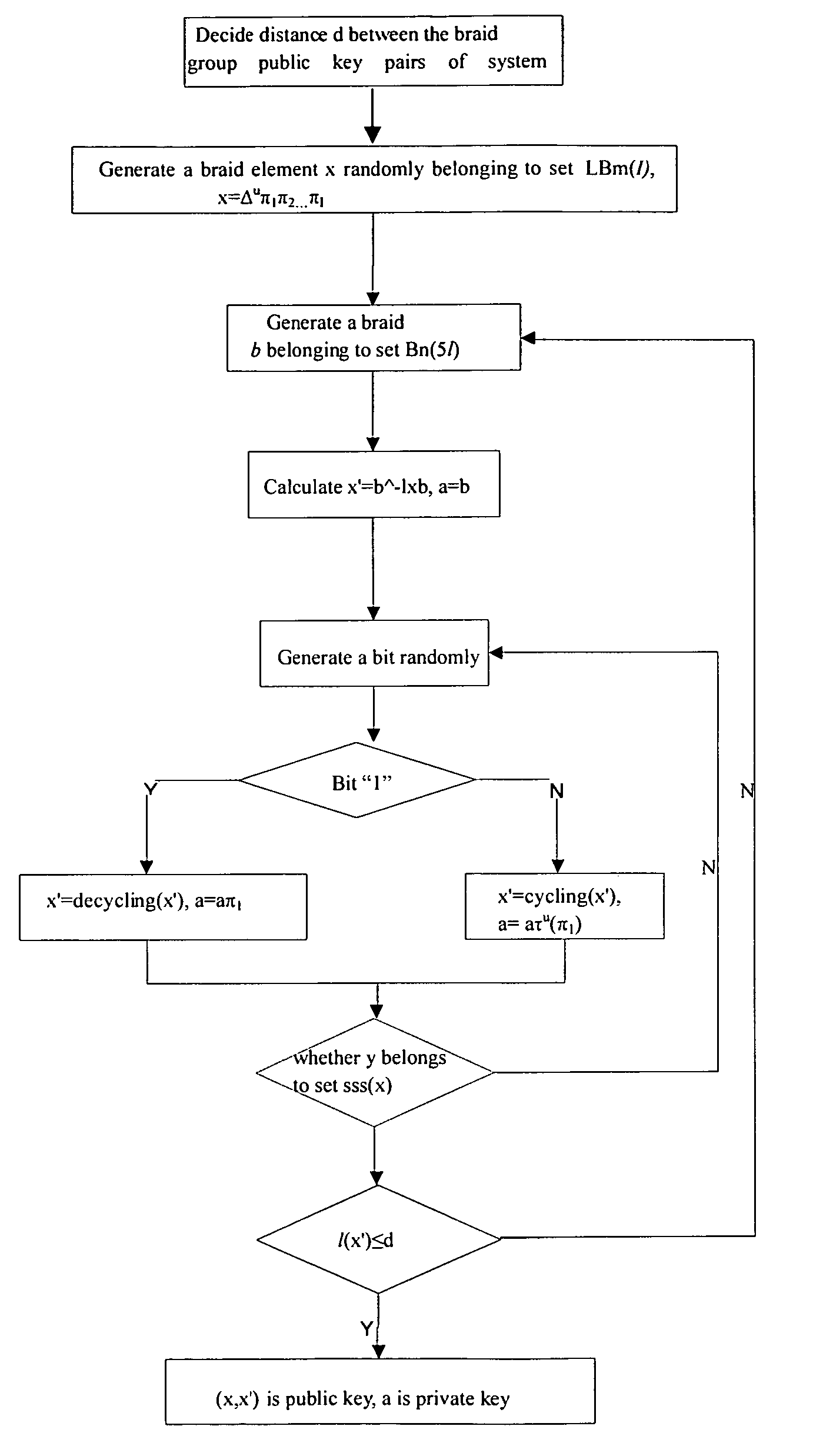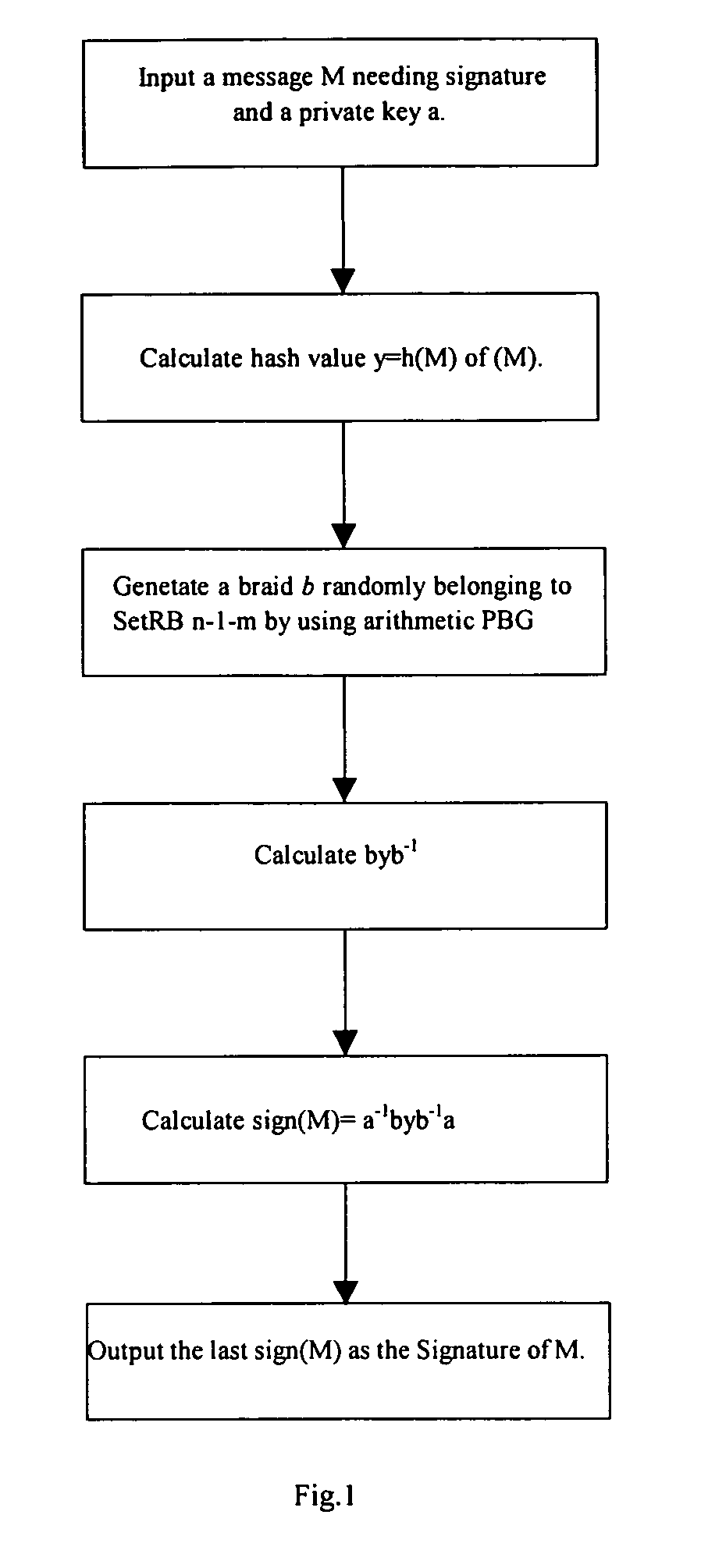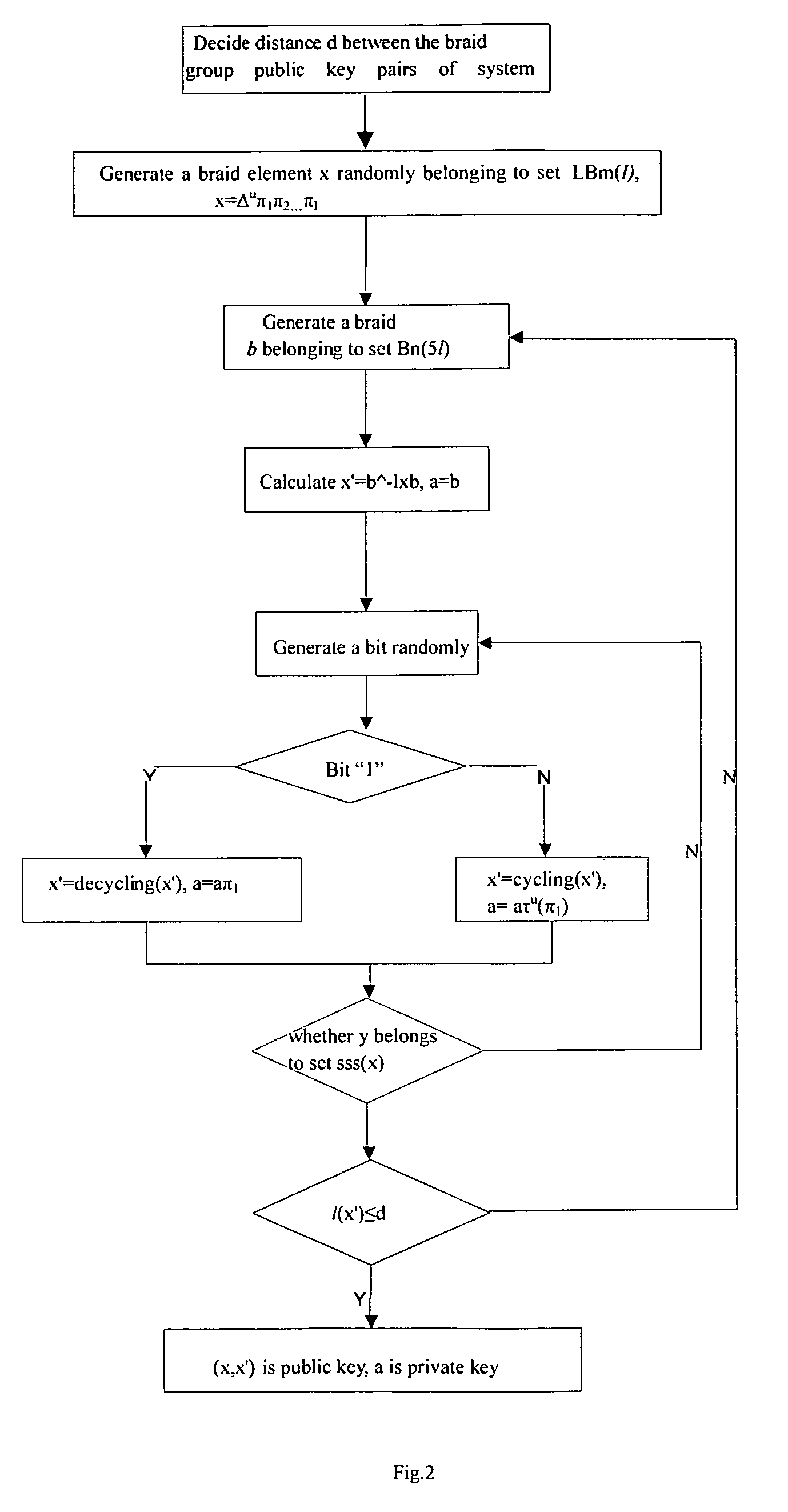Digital signature method based on braid groups conjugacy and verify method thereof
a braid group and digital signature technology, applied in the field of digital signature schemes, can solve the problems of less efficiency of rsa, longer use life of hardware, and more complexity and higher cost, and achieve the effect of more efficiency
- Summary
- Abstract
- Description
- Claims
- Application Information
AI Technical Summary
Benefits of technology
Problems solved by technology
Method used
Image
Examples
Embodiment Construction
[0061]Because the present invention involves a series of mathematic principles, its mathematic background will be explained first in the following:
[0062]Braid group Bn (n is the parameter of group) is an infinite group with finite representation, generated by Artin generators σ1, σ2, . . . , σn−1, which meet the following equation:
σiσj=σjσi(|i−j|>1,1<i,j<n) (1)
σiσjσi=σjσiσj(|i−j|>1,1<i,j<n) (2)
[0063]The group generated by m generators σ1, σ2 . . . σm−1 of left is called left subgroup of Bn, labeled as LBm; and the subgroup generated by n−1−m generators σm+1, σm+2 . . . σn−1 of right is called right subgroup of Bn, labeled as RBn−1−m. It is obviously known from (1) that selecting (x,y)εLBm×RBn−1−m arbitrarily, there is always xy=yx. As for a braid b, if it only contains σ1, σ2 . . . σn−1 instead of σ1−1, σ2−1 . . . , σn−1−1, b is called a positive element. As for positive element b, a, if there is a positive element or trivial element c that makes b=ac, then a is ...
PUM
 Login to View More
Login to View More Abstract
Description
Claims
Application Information
 Login to View More
Login to View More - R&D
- Intellectual Property
- Life Sciences
- Materials
- Tech Scout
- Unparalleled Data Quality
- Higher Quality Content
- 60% Fewer Hallucinations
Browse by: Latest US Patents, China's latest patents, Technical Efficacy Thesaurus, Application Domain, Technology Topic, Popular Technical Reports.
© 2025 PatSnap. All rights reserved.Legal|Privacy policy|Modern Slavery Act Transparency Statement|Sitemap|About US| Contact US: help@patsnap.com



